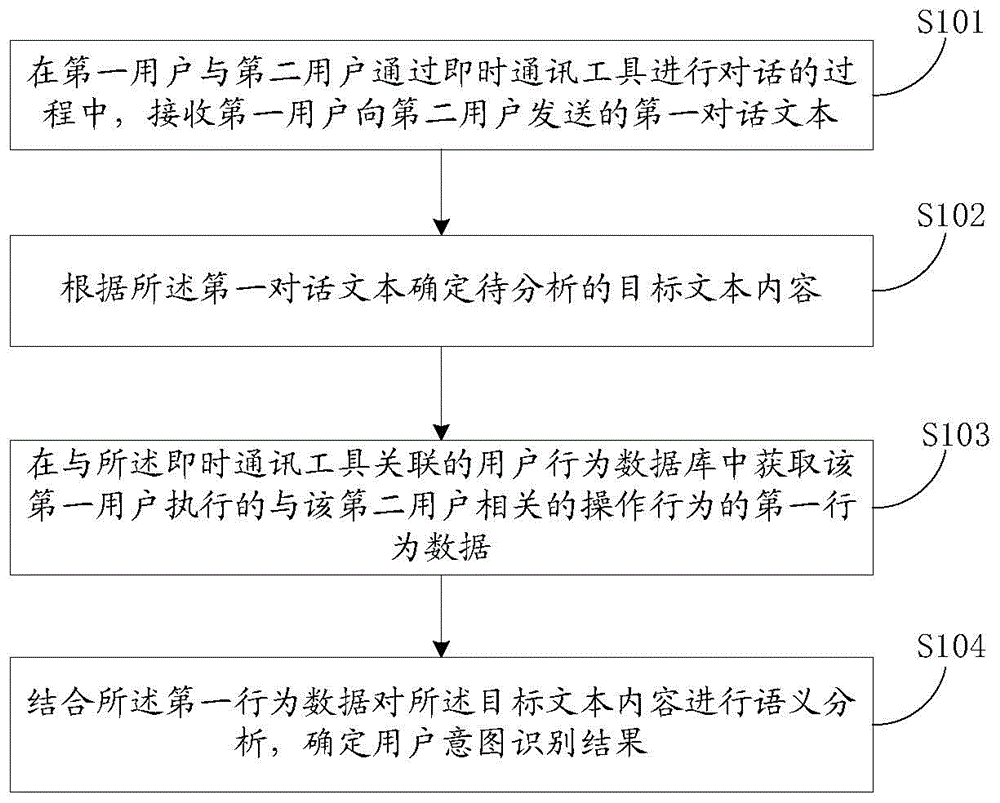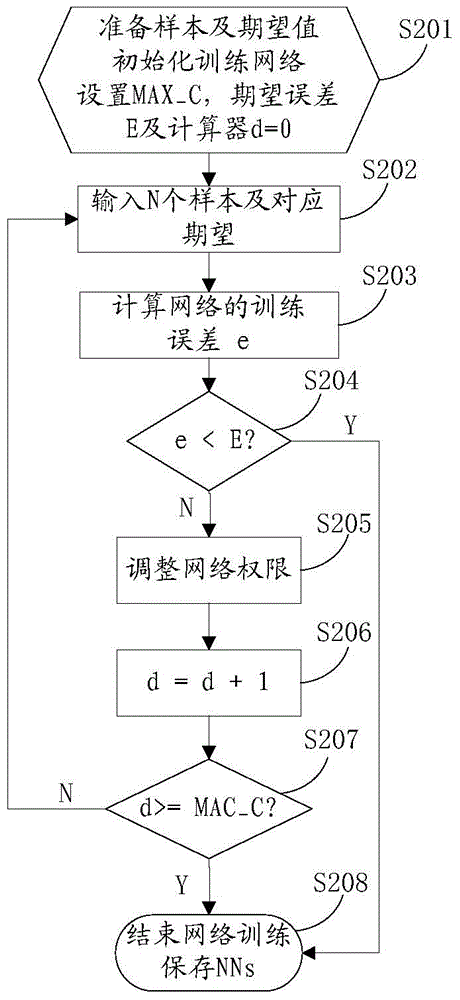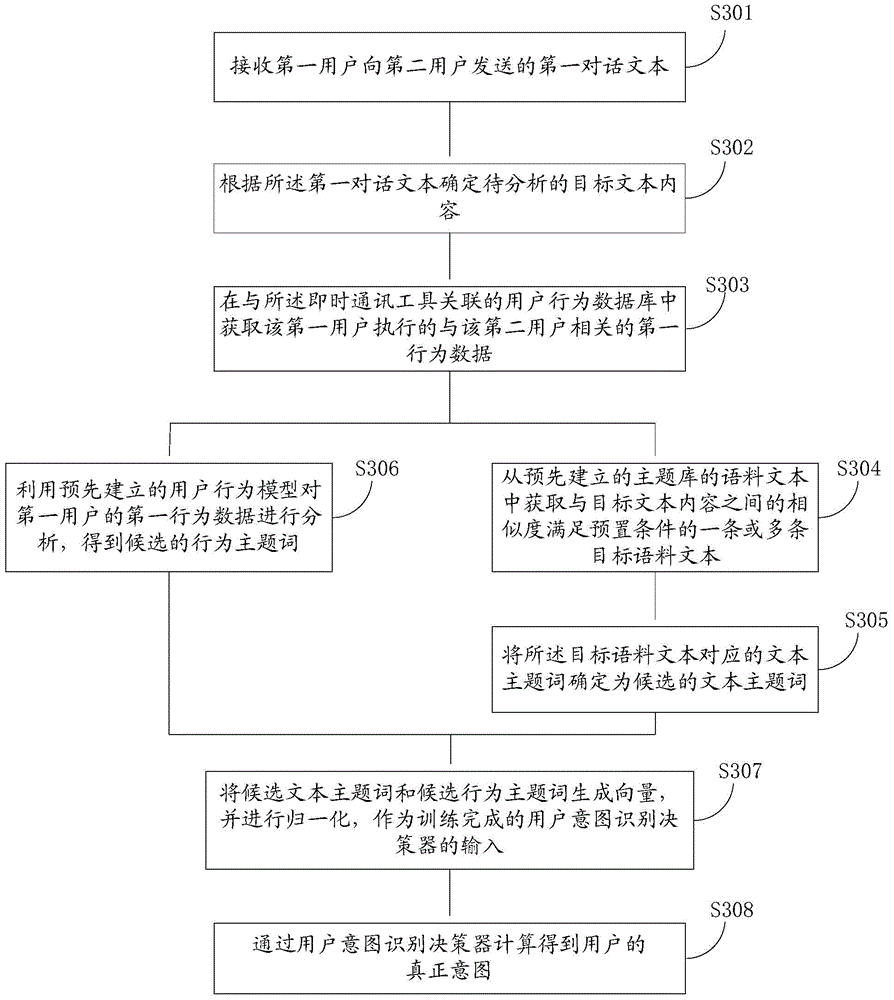User intention recognition method and device
A technology of user intent and recognition method, applied in the field of data analysis, can solve the problems of low recognition accuracy, low recall rate, and inability to know which product the user is targeting, and meets the requirements of real-time response, accuracy and recall rate Improve and avoid the effect of being too slow to respond
- Summary
- Abstract
- Description
- Claims
- Application Information
AI Technical Summary
Problems solved by technology
Method used
Image
Examples
example 1
[0092] Current dialogue text: Buyer A says to seller B: "Boss, I don't want the sweater anymore."
[0093] Behavior data: Buyer A browses a red sweater model SII12345 in seller B’s store, takes a photo of the sweater and pays for it; one hour later, buyer A asks seller B in the chat tool.
[0094] Textual subject headings identified by the semantic topic model: Rejected goods.
[0095] Behavioral keywords identified by the user behavior model: paid for goods, placed orders for goods, browsed goods.
[0096] Combining text keywords and behavior keywords into a vector is input to the decision maker to identify the real intention of buyer A: to cancel the order.
example 2
[0098] Current dialogue text: Buyer A says to seller B: "Boss, I don't want the sweater anymore."
[0099] Behavioral data: Buyer A browses a red sweater model SII12345 in seller B's store, takes a photo of the sweater and pays for it. The clothes were received 3 days later, and the logistics data showed that they had been signed for. At the same time, buyer A asked seller B in the chat tool in the afternoon.
[0100] Textual subject headings identified by the semantic topic model: Rejected goods.
[0101] Behavioral keywords identified by the user behavior model: goods signed for, goods arrived, goods shipped by the seller, goods paid for, and goods ordered.
[0102] Combining text keywords and behavior keywords into a vector is input to the decision maker to identify the real intention of buyer A: to return the product.
[0103] Comparing Example 1 and Example 2, it can be seen that when a buyer user sends the same dialogue text, different user intentions can be identifie...
example 3
[0105] Current dialogue text: Buyer A said to seller B: "Boss, don't express delivery 1, it is very slow, change express delivery 2 for me".
[0106] Behavioral data: Buyer A browses a red sweater model SII12345 in seller B’s store, takes a photo of the sweater and pays for it at the same time, buyer A asks seller B in the chat tool.
[0107] Text subject words recognized by the semantic topic model: change courier, don't courier, specify courier.
[0108] Behavioral keywords identified by the user behavior model: paid for goods, placed orders for goods, browsed goods.
[0109] Combining text keywords and behavior keywords into a vector is input to the decision maker to identify the real intention of buyer A: to specify the courier (rather than "changing courier" which is the closest semantic model).
PUM
 Login to View More
Login to View More Abstract
Description
Claims
Application Information
 Login to View More
Login to View More - R&D
- Intellectual Property
- Life Sciences
- Materials
- Tech Scout
- Unparalleled Data Quality
- Higher Quality Content
- 60% Fewer Hallucinations
Browse by: Latest US Patents, China's latest patents, Technical Efficacy Thesaurus, Application Domain, Technology Topic, Popular Technical Reports.
© 2025 PatSnap. All rights reserved.Legal|Privacy policy|Modern Slavery Act Transparency Statement|Sitemap|About US| Contact US: help@patsnap.com



